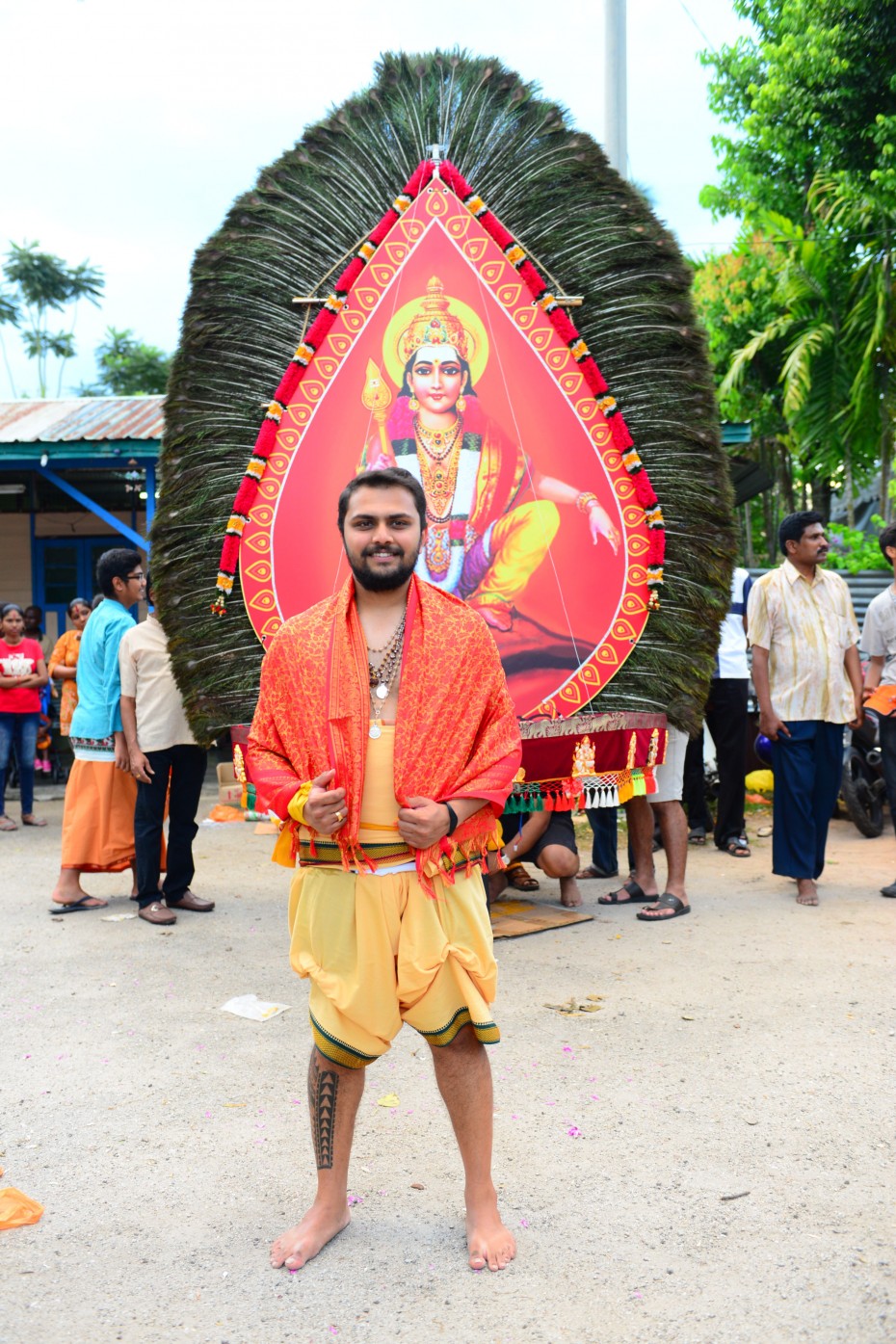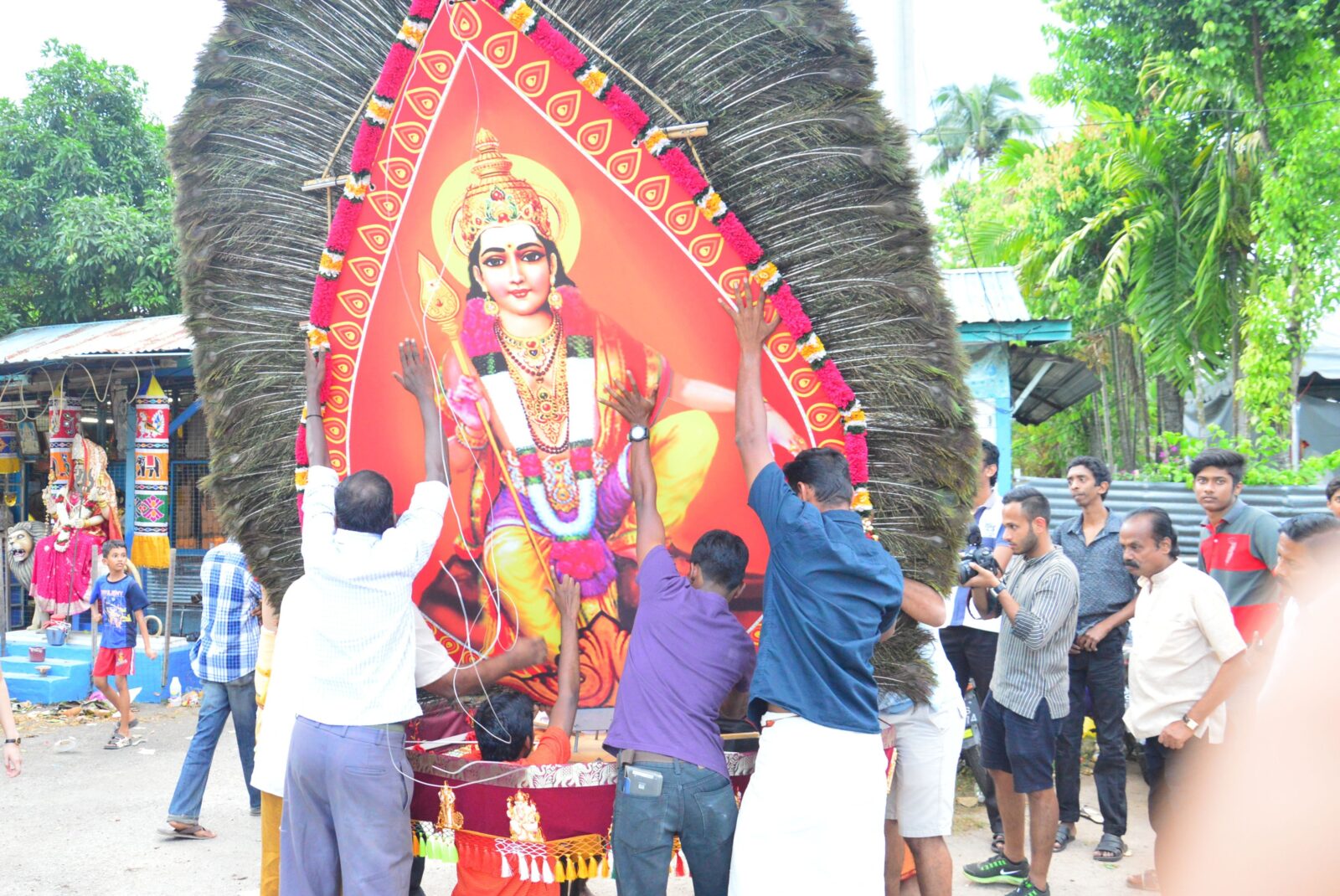THE pilgrimage up Batu Caves during Thaipusam is usually tough enough. You have to carry a kavadi – a physical burden – up 272 steps to the temple inside the cave, surrounded by thousands of other devotees.
Even then, Vickraman Manivasagan, 25, decided to go the extra mile.

Vickraman with the 10-foot kavadi he designed and built for Thaipusam. He spent over RM7,000
on the kavadi. — Handout
Instead of renting or buying one of the elaborate kavadi like many others do, the young man decided to build his own ahead of Thaipusam last month, and it was quite a kavadi too.
Vickraman’s kavadi was over 10 feet tall, weighing over 70kg, which is about the same as his body weight. Most kavadi weigh around 25-30kg.
“I made a vow a long time ago that if and when I get my dream job, which is to be a pilot, I’ll carry a kavadi,” he said. He decided that he would make his pilgrimage for three consecutive years. Two down, one more to go next year.
“The first year had been long overdue, because I guess you can only carry it when the right time comes. And in my job, it’s tough to be a vegetarian for 48 days (part of the preparations ahead of the pilgrimage). One day I’ll be in Australia, and the next I could be in the Middle East – not all these places have vegetarian food.
“But at the end of the day, the longer you think of god, the closer you get to him.”
That same desire to be devoted also inspired him to build his kavadi, with some help from his family, friends and a professional kavadi maker.
A kavadi can be broken down to three main parts – a steel frame that holds everything together, a wooden base that goes on top of the shoulders of the devotee, and the ornate top section, where the image of the god is placed.
It takes quite a bit of DIY work to assemble everything, from cutting and sanding the wood, to bending the steel plates that wrap around the waist to balance the massive kavadi.
And then there’s the decorative work. Vickraman’s kavadi was decorated with over 500 LED lights and 3,000 peacock feathers, painstakingly attached (with some professional help) around an image of Lord Murugan which was made to order from India. He travelled to India four times before he had all the items he needed.
Another difficult task was wiring up all 500 LEDs, arranging them according to the different colours, and getting them to work at the same time. There was a lot of trial and error involved.
“Because the kavadi is about the same weight as I am, the measurements had to be very accurate, if not, my entire journey would have been agonising,” he said.
Professional kavadi maker Balasubramaniam Batumalai said more young devotees these days prefer to make their own kavadi – with some professional help along the way – because it allows them to design the kavadi just the way they want it.
In total, Vickraman spent RM7,000 on his kavadi. Renting one would have cost a mere RM650-750.
Due to the size of his kavadi, it had to be constructed and transported in two parts. He went to Batu Caves two days before Thaipusam, spending the night at a nearby temple to assemble the kavadi.
“Since this is only my second time carrying a kavadi, I’m still learning along the way.
“But I plan to reuse this kavadi next year with some minor modifications to its decorations.”








Leave a reply